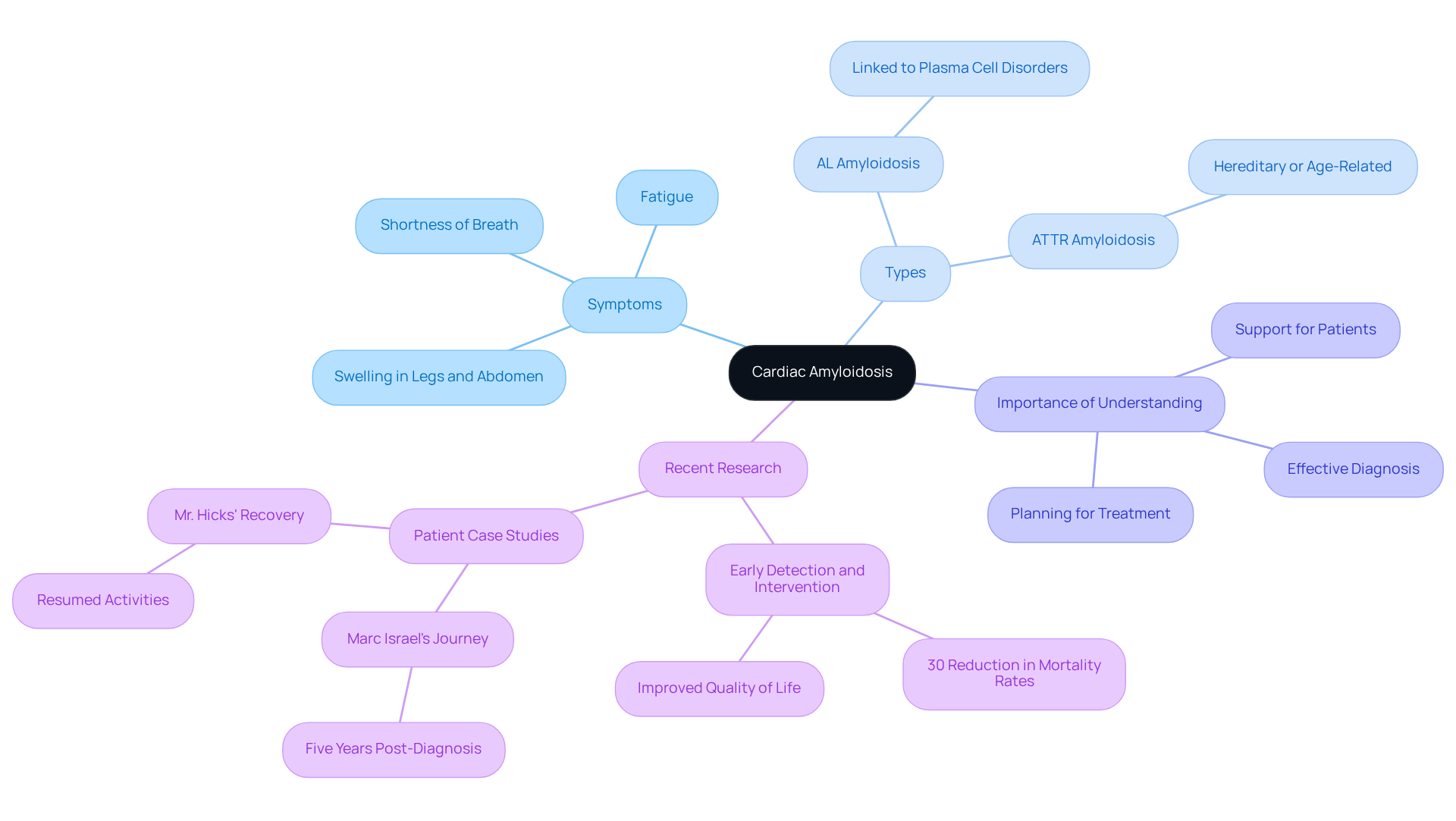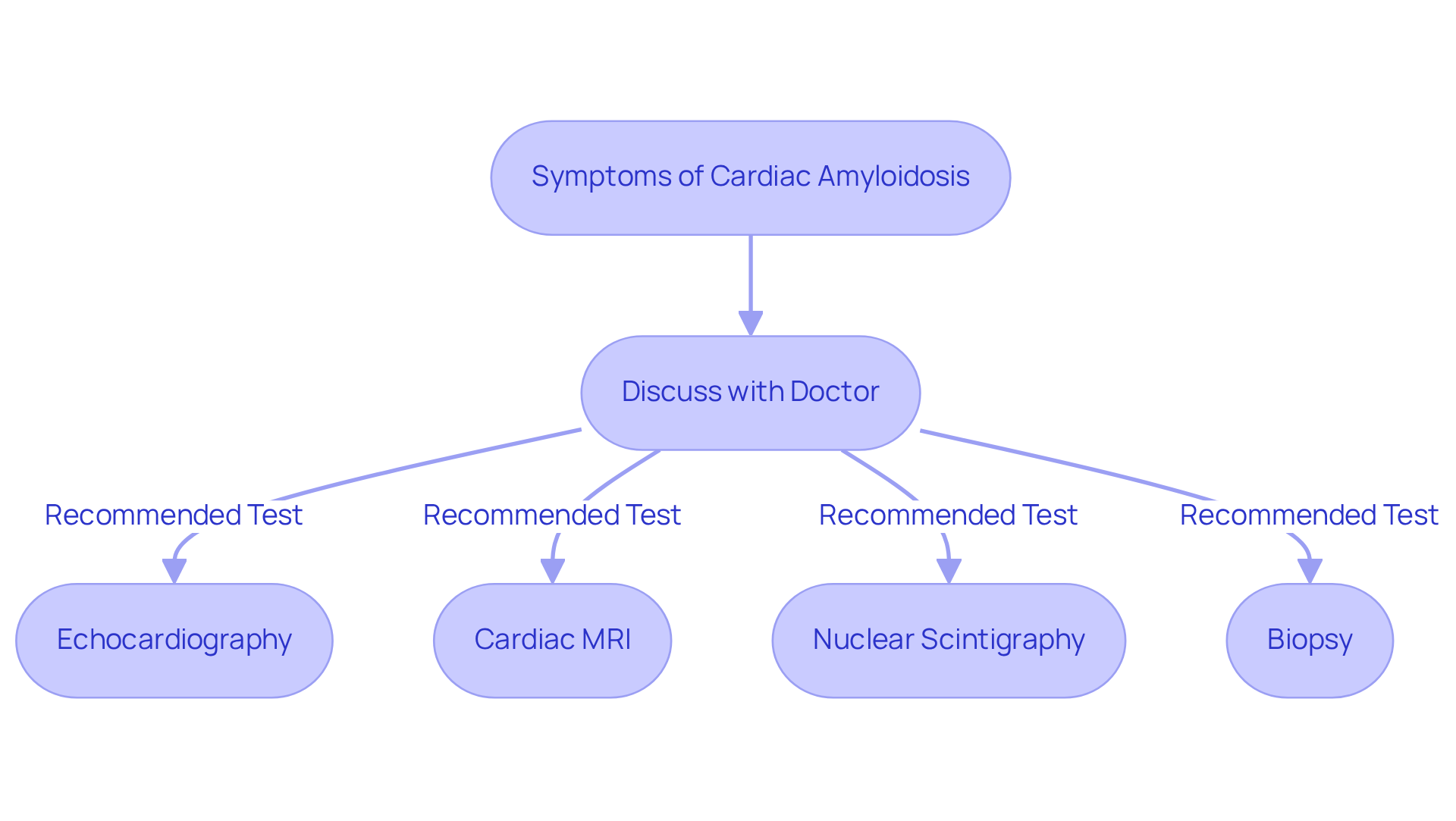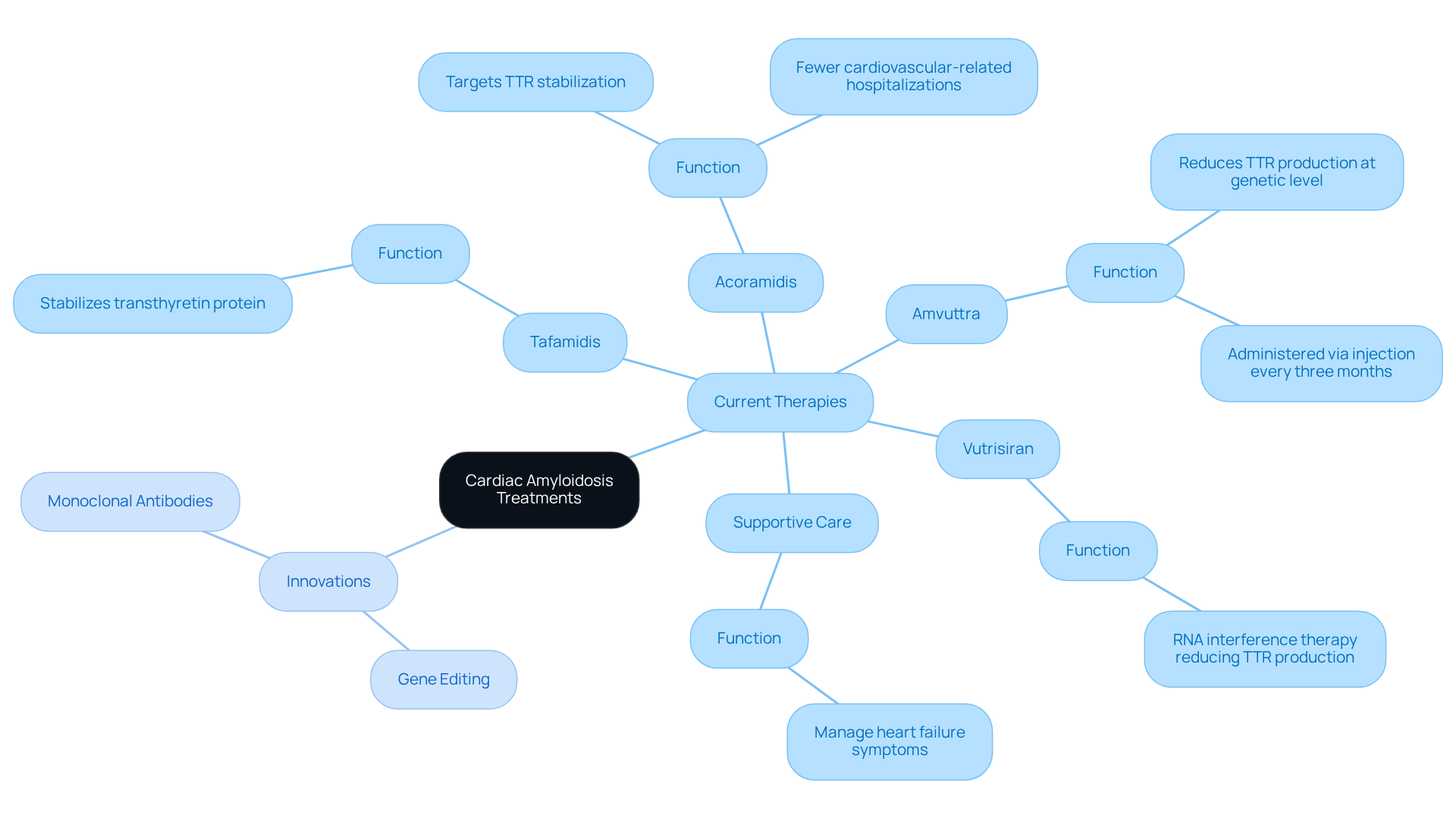


Cardiac amyloidosis is a serious condition that can be quite concerning. It involves the abnormal accumulation of amyloid proteins in heart tissue, which can lead to restrictive cardiomyopathy. Many patients experience symptoms such as shortness of breath and fatigue, which can be distressing.
It’s crucial to understand that early diagnosis and treatment can make a significant difference. There are key diagnostic tests available, and recent advancements in therapies can greatly improve outcomes and enhance the quality of life for those affected.
If you or a loved one are experiencing symptoms, please don’t hesitate to seek help. Remember, you are not alone in this journey, and there are compassionate professionals ready to support you every step of the way.
Cardiac amyloidosis is a condition characterized by the abnormal buildup of amyloid proteins in heart tissue, which can significantly impact heart health and overall well-being. Understanding the nuances of this disease is essential, especially as recent advancements in diagnosis and treatment have emerged, providing hope for improved patient outcomes. However, with only a small percentage of patients receiving accurate diagnoses, we must ask ourselves: how can we enhance awareness and promote early detection of this often-overlooked condition?
In addition to this, it’s important to recognize the emotional weight that such a diagnosis can carry. Many individuals may feel anxious or uncertain about their health, and it’s completely natural to have these feelings. As we explore the challenges of cardiac amyloidosis, let’s focus on the solutions and support available to patients and their families. Together, we can work towards a future where early detection is more common, and individuals feel empowered to seek the care they deserve.
Cardiac dysfunction due to cardiac amyloid deposition is a serious condition that many may find concerning. The condition involves the abnormal accumulation of cardiac amyloid proteins in heart tissue, leading to restrictive cardiomyopathy. This infiltration of amyloid fibrils disrupts normal heart function, resulting in symptoms such as shortness of breath, fatigue, and swelling in the legs and abdomen. Understanding this condition is crucial, especially since there are two primary types of cardiac amyloid:
Comprehending these differences is essential for effective diagnosis and planning, particularly for older adults who may display unusual symptoms.
Recent research has shown that early detection and intervention can significantly enhance outcomes for individuals. New therapies have been found to lower mortality rates by 30% and improve quality of life. For instance, patients like Marc Israel, diagnosed with a heart condition, have experienced remarkable improvements in their health and vitality after starting treatment. This has allowed them to engage in activities they once enjoyed.
Recognizing the indicators and categories of cardiac amyloid disease is vital. By doing so, we can enable prompt and efficient management, ensuring that patients feel supported and understood throughout their journey. If you or a loved one are experiencing symptoms, please reach out for help. You deserve care and support during this time.

Diagnosing cardiac conditions requires a thoughtful approach, beginning with a comprehensive clinical assessment. It's essential to understand the tests that may be involved in this process, as they can provide valuable insights into your heart health. Here are some key diagnostic tests that your healthcare provider may recommend:
If you are experiencing unexplained heart failure symptoms, arrhythmias, or signs of systemic involvement—such as neuropathy—these could be indicators of heart-related issues. It's important to discuss these symptoms with your doctor, as they may warrant further investigation. Current diagnostic rates show that only about 0.53% of patients receiving echocardiograms exhibit characteristics indicative of amyloid cardiomyopathy. This highlights the need for improved screening techniques to ensure prompt diagnosis and care. Remember, you are not alone in this journey, and reaching out for support can make a significant difference.

Significant strides have been made in recent years in the management of cardiac amyloid deposits, particularly concerning ATTR deposits. Understanding your health is our priority, and we want to share some current therapies that may offer hope:
At Amavita Heart and Vascular Health®, we are dedicated to enhancing these care options with our advanced imaging and thorough assessments. We ensure that high-risk individuals receive focused cardiovascular support tailored to their unique needs. If you're facing insurance coverage issues, know that patient assistance programs are available for Amvuttra, offering you the extra support you deserve.
We are also exploring innovations such as gene editing and monoclonal antibodies in clinical trials, which hold promise for more efficient solutions in the future. Continuous monitoring and individualized treatment plans are essential for optimizing outcomes in patients with cardiac amyloid. Our outpatient approach allows for same-day convenience, helping you return to the life you love without disruption. Remember, you are not alone on this journey; we are here to support you every step of the way.

Cardiac amyloidosis represents a significant health challenge, marked by the abnormal accumulation of amyloid proteins in the heart, which can lead to serious dysfunction. Understanding the differences between AL and ATTR amyloidosis is crucial for accurate diagnosis and effective treatment planning. By raising awareness of this condition, we can empower individuals to seek timely medical intervention, ultimately improving their quality of life.
This article has highlighted essential aspects of cardiac amyloidosis, including its symptoms, diagnostic approaches, and the latest therapeutic advancements. Key diagnostic tests, such as:
play a vital role in identifying this condition. Furthermore, innovative treatments like Tafamidis and Acoramidis have shown promise in stabilizing the transthyretin protein and reducing hospitalizations, reflecting the progress made in managing this complex disease.
As research continues to evolve, it is important to stay informed about cardiac amyloidosis and the available treatment options. If you or a loved one are experiencing symptoms related to heart health, do not hesitate to reach out to healthcare professionals. With advancements in diagnosis and therapy, there is hope for improved outcomes. Engaging in proactive health management can significantly enhance your journey toward recovery and well-being.
What is cardiac amyloidosis?
Cardiac amyloidosis is a serious condition characterized by the abnormal accumulation of amyloid proteins in heart tissue, leading to restrictive cardiomyopathy and disrupting normal heart function.
What are the symptoms of cardiac amyloidosis?
Symptoms of cardiac amyloidosis include shortness of breath, fatigue, and swelling in the legs and abdomen.
What are the two primary types of cardiac amyloidosis?
The two primary types of cardiac amyloidosis are AL (light chain) amyloidosis, which is linked to plasma cell disorders, and ATTR (transthyretin) amyloidosis, which can be hereditary or age-related.
Why is it important to understand the differences between the types of cardiac amyloidosis?
Understanding the differences between the types of cardiac amyloidosis is essential for effective diagnosis and treatment planning, especially for older adults who may display unusual symptoms.
How can early detection and intervention impact outcomes for individuals with cardiac amyloidosis?
Early detection and intervention can significantly enhance outcomes, with new therapies shown to lower mortality rates by 30% and improve the quality of life for patients.
Can you provide an example of a patient who benefited from treatment for cardiac amyloidosis?
An example is Marc Israel, who, after being diagnosed with a heart condition and starting treatment, experienced remarkable improvements in health and vitality, allowing him to engage in activities he once enjoyed.
What should individuals do if they or a loved one experience symptoms of cardiac amyloidosis?
Individuals experiencing symptoms of cardiac amyloidosis should reach out for help to ensure they receive the care and support they deserve during this time.